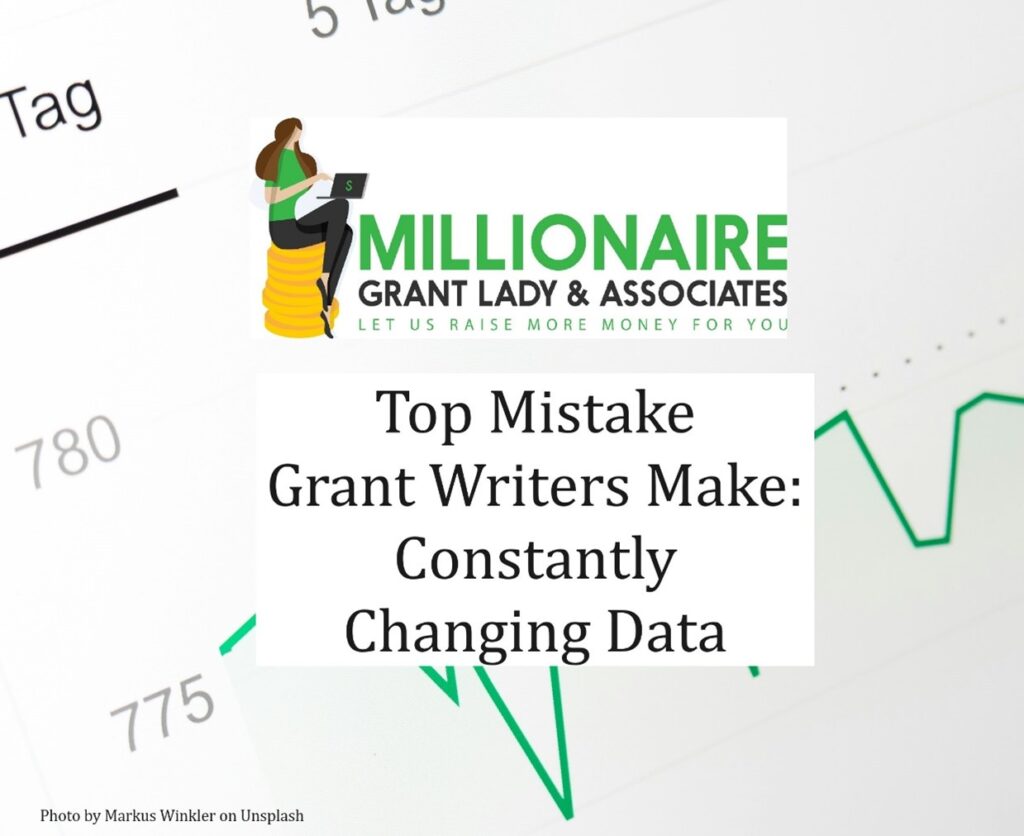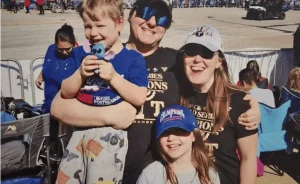We have been in the grant writing business for a long time, and one important shift we have seen over the last several years has been that funders are requiring more data from more nonprofits. Common questions in a grant proposal ask about the demographics of the people you serve, how many people you serve, or the impact of your programs. All of these questions indicate a need for data.
Millionaire Grant Lady and Associates has helped nonprofits earn more than $100 million in funding. Read our article here about our 2023 successes. As we have worked with nonprofits, some of those nonprofits love to delve into data and constantly adjust goals and metrics, and other nonprofits need more guidance about how to structure their goals to be data-driven. While data is absolutely important for a nonprofit to track and report accurately to funders, there are easy ways to simplify this process so that data is easier to collect, report, and use to inform your day-to-day operations as well as goals for the future.
In this series, we are covering some of the most common mistakes we see organizations with grant writers make and how to avoid these errors. Read this article to see:
- Mistake #5: Grant writers continuously adjusting data when writing grants
- How can I know if a funder requires really up-to-date data in a grant application?
- Protip: Grant application data and goals should be based on fiscal years or calendar years (whichever is more appropriate for your organization).
- Conclusion: Simplify
For more articles about how to make the most effective foundation proposal, see these articles:
- Nonprofit Program Design and Winning Grants
- Getting a Foot in the Door with a Big Funder
- Finding the Right Foundation Funders
Grant Writing Mistake #5: Continuously adjusting data when writing grants.
We all know that nonprofit work is ever-changing. This week, you served 200 people, next week 250, the week after 175, and so on.
Many nonprofits are tempted to change the information they use in foundation applications based on this contantly changing data. For example, if at the start of the year you set a goal to serve 250 people each week, but then you hit that goal for a few weeks halfway through the year, you may be tempted to set a new goal to serve 300 people each week.
When it comes to preparing grant applcations, constantly changing the data you are using can make it easy for mistakes to be made (which number are we using now?) and it can be more difficult to communicate to funders (what data did we give that funder?). Constantly changing data also makes it difficult for you to later collect data about your stated goals and report it accurately to funders.
How can I know if a funder requires really up-to-date data in a grant application?
Ultimately, these constant updates aren’t really even necessary. Foundation proposal reviewers are not daily employees of your organization, nor do they want to be (usually anyway!). They don’t need, expect, or want real-time data, and the ones who do want this will ask for it. Foundations who want real-time data will ask questions like this:
- Provide the number of people served last month.
- Provide demographics of constituents served up to this point of this fiscal year.
- Provide budget-to-actuals comparison through the last month.
Most funders don’t ask those types of questions, though. Instead, they ask more general questions like “What are your program goals.” These funders are looking for more general information about your program—like a goal for this fiscal year—instead of a minute-by-minute update of your program data. It is perfectly acceptable to give all funders the exact same data. In fact, by providing all funders with the same data, you will really simplfy the grant application, data collection, and reporting process. Instead of collecting 8 sets of data for 8 funders, you will collect 1 set of data that you can use for reports for all of last year’s funders as well as for this year’s applications. 1 set of data, so many ways to use it.
Grant Writing Mistake Solution: Grant application data and goals should be based on fiscal years or calendar years (whichever is more appropriate for your organization).
| Purpose of Data | Type of Data to Use |
| Data used in grant proposals to answer questions like how many people you serve, demographics, metrics, etc. | Last year’s data is used for all this year’s applications. |
| Data submitted in reports to answer questions about the impact of their grant dollars | Last year’s data is used for all of this year’s reports. |
| Goals set (programs, projects, and organization level goals) | Set goals at the start of the fiscal year that you will include in all this year’s applications. |
| Data collected for reports (what you will provide to funders about the impact of your program) | Collect data from all of this year that will be used for reports for this year’s funders and to inform next year’s goals. |
Grant Writing Mistake Solution: Simplify
As we have worked with each nonprofit, we know that ultimately what they are trying to do is win more money for their mission so they can have a greater impact on their community. But some of these well-meaning errors can have costly consequences.
In this series, we have been covering some of the most common errors we see. If I had to sum up my advice in one word, it would be to “simplify.”
- Simplify who reviews grants—approve language at the start of your grant year, and then let the grant writer take it from there!
- Simplify how you track and report data—have one set of data that goes to all funders!
- Simplify your language—make sure someone outside of your organization can clearly understand what you are trying to say!
- Simplify how you approach applying to grants—follow their instructions and don’t try to make your own loopholes!
- Simplify your focus—Show foundations how you are meeting a great need in the community. Remember, it is all about your impact!
If you are seeking an expert partner to join you in your work to raise more funds, we are ready to join you in this work today. To date, we have raised more than $100 million in funding that helped nonprofits support programs, operations, capital needs, and capacity building. We can help you not just avoid these five errors, but also elevate your application so you can earn more vital funding.
Contact us today to see how we can help.




